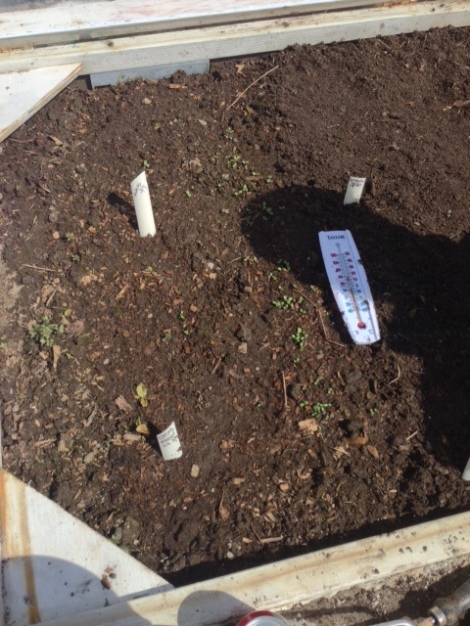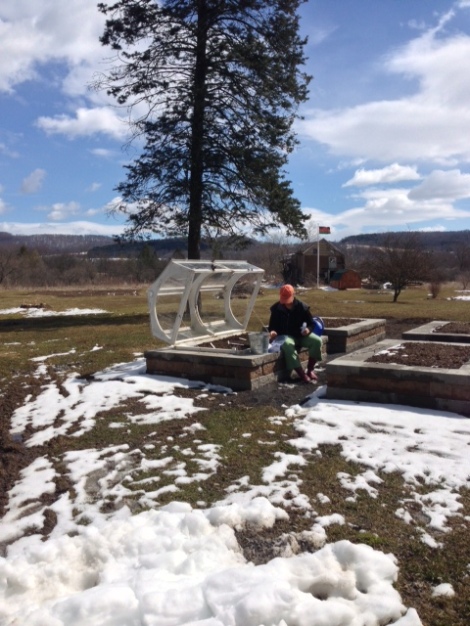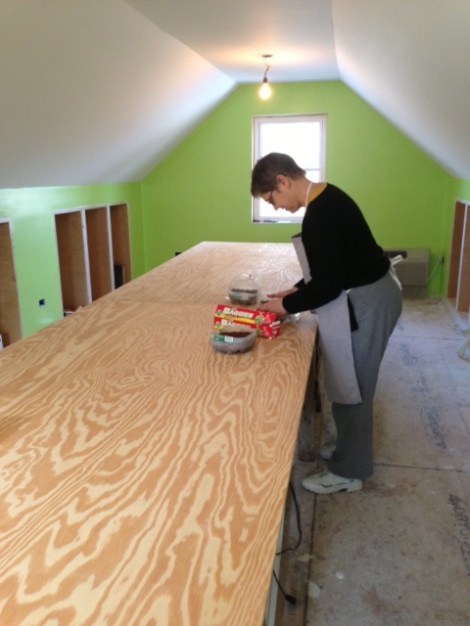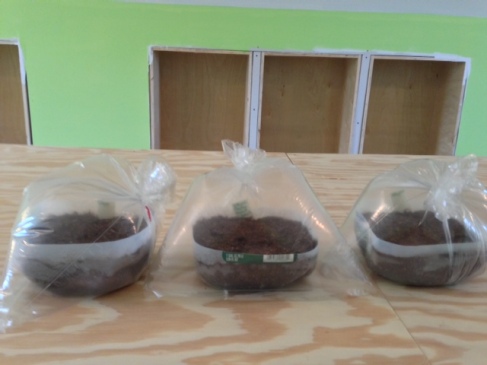In today’s Chez Howard garden: general cleanup; working end-of-season leaves & grass clippings into the compost pile. That pile, incidentally, is still cooking. After all these years of composting, we now have a really good mower that picks up and delivers all the grass and leaves. So for the first time, I’ve worked the pile all the way up to this point in 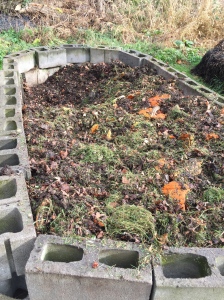 November. Always before, I’d stop working the current season’s pile in August, when I’d begin building next year’s pile. But “building” just meant dumping stuff—watermelon rinds, winter squash shells, biodegradable kitchen debris, and raked-up whole leaves—onto it.
November. Always before, I’d stop working the current season’s pile in August, when I’d begin building next year’s pile. But “building” just meant dumping stuff—watermelon rinds, winter squash shells, biodegradable kitchen debris, and raked-up whole leaves—onto it.
This year, in contrast, all those leaves went into the pile all chopped up and mixed with late-season grass clippings. So this year as I built the new pile, I worked it, using my four-tine manure fork and a tilling fork with 6″ tines to turn, mix, unearth, break up, rebury garden and kitchen waste. (Yes, a half hour of this counts as my day’s workout!) And friends, I’m here to testify it’s worth it. We’ve had a very cold November here in the CNY featuring some single-digit overnight lows. Yet today, as I worked the pile, earthworms and maggots wiggled in some spots while pockets of steam drifted up from others. That compost pile is very much alive, actively decomposing, promising good contributions to the 2016 garden. Tomorrow the remaining grass and leaves will be dumped on it, and on top of that, the remaining holiday pumpkins. And there they will sit until compost-turning begins when the ground thaws again, in April of another year.
